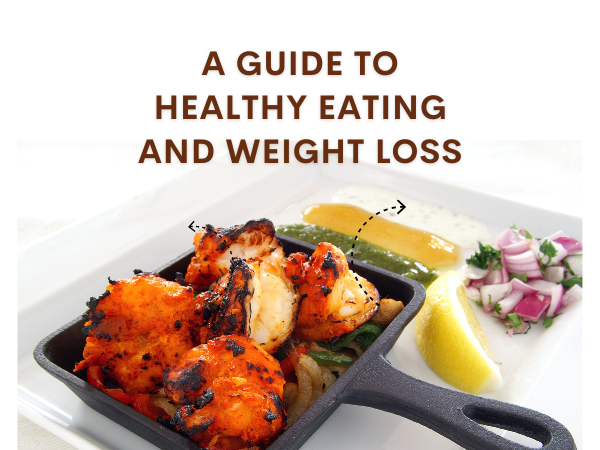Introduction Healthy Eating and Weight Loss
Maintaining a healthy weight is crucial for overall well-being and reducing the risk of chronic diseases.
In this comprehensive guide, we will explore the principles of healthy eating and weight loss, drawing insights from the renowned experts at Harvard.
By adopting these strategies, you can embark on a journey towards a healthier weight and a more fulfilling life.
The Basics of a Healthy Diet
A healthy diet forms the foundation of successful weight loss. Harvard experts recommend focusing on whole, nutrient-dense foods while minimizing processed and sugary options.
Fill your plate with an abundance of colorful fruits and vegetables, lean proteins, whole grains, and healthy fats.
These foods provide essential nutrients, fiber, and satiety, promoting weight loss and overall health.
When it comes to weight loss, it’s not just about calorie counting. The quality of the calories you consume matters.
Opt for nutrient-rich foods that nourish your body and support your weight loss goals. A diet rich in fruits and vegetables provides essential vitamins, minerals, and antioxidants while being low in calories.
They can be incorporated into meals, snacks, or even as ingredients in smoothies and salads.
Lean proteins are another essential component of a healthy diet for weight loss. They are not only satiating but also help build and maintain muscle mass, which is vital for a healthy metabolism.
Incorporate lean protein sources such as skinless poultry, fish, tofu, and legumes into your meals. These options are rich in protein, low in saturated fats, and provide a wide range of nutrients.
Whole grains are another key player in a healthy weight loss diet. They are high in fiber, which helps you feel full and satisfied, preventing overeating.
Opt for whole grain options like quinoa, brown rice, and oats, which provide more nutrients and fiber compared to refined grains.
Specific Diet Plans for Weight Loss
The Mediterranean Diet: Known for its heart-healthy benefits, the Mediterranean diet emphasizes plant-based foods, such as fruits, vegetables, whole grains, legumes, and olive oil.
It encourages moderate consumption of fish, poultry, and dairy, while limiting red meat and sweets.
This diet is rich in healthy fats, such as omega-3 fatty acids, and has been associated with weight loss and improved overall health.
The DASH Diet: Designed to lower blood pressure, the Dietary Approaches to Stop Hypertension (DASH) diet also promotes weight loss.
It focuses on consuming fruits, vegetables, whole grains, lean proteins, and low-fat dairy products, while reducing sodium and processed foods.
By following the DASH diet, you can improve your blood pressure and achieve weight loss simultaneously.
The Weight Watchers Diet: Weight Watchers offers a flexible and personalized approach to weight loss. It assigns points to different foods, encouraging portion control and overall calorie reduction.
The program also emphasizes behavioral changes, support networks, and physical activity. Weight Watchers can be a helpful tool for those seeking structure and accountability in their weight loss journey.
Exercise and Weight Loss
While diet plays a significant role in weight loss, exercise is equally important for sustainable results.
Harvard experts recommend aiming for at least 150 minutes of moderate-intensity aerobic activity per week, complemented by strength training exercises.
Regular physical activity not only burns calories but also improves cardiovascular health, boosts metabolism, and enhances overall well-being.
Incorporate exercises you enjoy, whether it’s walking, jogging, cycling, dancing, or swimming. Find opportunities to stay active throughout the day, such as taking the stairs instead of the elevator or going for a walk during your lunch break.
Remember, consistency is key, so aim for a balanced and varied exercise routine that you can stick to in the long run.
Tips for Maintaining a Healthy Weight
Set Realistic Goals: Instead of focusing solely on the number on the scale, set achievable goals related to overall health and well-being. Celebrate small victories along the way, such as adopting healthier eating habits or improving fitness levels.
Practice Mindful Eating: Pay attention to your body’s hunger and fullness cues, eat slowly, and savor each bite. Mindful eating can help prevent overeating and promote a healthier relationship with food.
Stay Consistent: Consistency is key to long-term success. Stick to your chosen healthy eating plan and exercise routine, even on weekends or during holidays. Small, sustainable changes over time can lead to significant results.
Seek Support: Surround yourself with a supportive network of family, friends, or even a weight loss support group. Having others on a similar journey can provide motivation, accountability, and valuable insights.
Conclusion
Embarking on a journey to healthy eating and weight loss is a powerful step towards improving your overall well-being.
By following the principles outlined in this Harvard guide, you can make informed choices about your diet, embrace physical activity, and establish habits that will support your long-term goals.
Remember, small changes add up, and with determination and persistence, you can achieve a healthier weight and a happier life.
